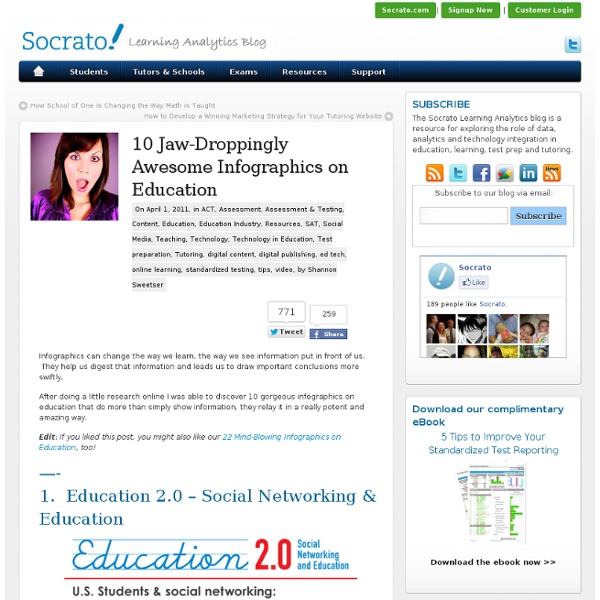• Statista - The Statistics Portal for Market Data, Market Research and Market Studies
Architecture Infographics
While The WA100, Building Design’s annual ranking of the world’s largest architecture firms, isn’t perfect (see our controversial article here), it does reveal a lot about the state of architecture today. And for 2013, the research shows that there are finally brighter days ahead for architects – just not at home. BD’s research reveals that China remains the world’s largest construction market (a title it’s held since 2010); that the Asia-Pacific Market is expected to be the largest by 2020 (with projected value of $4.6 trillion dollars); and that China, India, and Brazil offer the best growth potential for architectural services. However, are these mega-firms really the best models to aspire to? Almost certainly not. Find out whether/where you should go abroad, after the break… (more…)
Work
Cool Infographics
Infographics for Students - Top 3 Online Schools : Online ...
Welcome to Visual Academy, OnlineSchools.org's novel attempt at furthering education and creating a hunger for more knowledge through the use of visual learning techniques. Visual learning is a learning style in which teaching is accomplished through the association of images and techniques with ideas, concepts, data and other information. While the concept of purely visual learners has been debunked, the benefits of using graphics to introduce new concepts and ideas are still worth mentioning. Mixing things up, such as conveying data with pictures rather than straight text, can boost attention. It is precisely this boost of attention that can aid in learning because "when students pay closer attention, they learn better," psychologist Dan Willingham told NPR. Our infographics aim to catch your attention by presenting data in an interesting new way.
Datavisualization
Infographic: How Rich Is Your Religion?
As a born and bred atheist, I don’t know terribly much about the bible, but if you asked me, I could probably summon up a few vague platitudes, like “be nice to your neighbors” and “blessed are the poor.” So, exactly how poor are Jesus’s disciples today? An infographic from GOOD and Column Five demonstrates how religion lines up with income in America, examining how faith and wealth mingle in contemporary society. Click to enlarge. “It’s no secret that the distribution of wealth is inequitable in the United States across racial, regional, and socio-economic groups,” write the designers at Column Five, a Newport Beach creative agency that specializes in data viz and infographics. “But there is a distinct variance among and within America’s faiths, as well.” While this chart only shows the money coming in, it would be fascinating to include the average amount of charitable giving amongst each group. It’s a fascinating glimpse at how faith matches up with income. [H/t GOOD]
Graphs, Infographics
Google's Geographies of Religion
“Religion is probably, after sex, the second oldest resource which human beings have available to them for blowing their minds” Susan Sontag Following up on the earlier discussion of the user-created geographies of religion, the following maps simultaneously display all four religious references (Allah, Buddha, Hindu, Jesus) in order to visualise distinct religious cyberscapes. Below we see the data on a global scale. Interestingly, there are are no large-scale homogeneities in the data and this reflects the sometimes scattered nature of religious practice in the world. In Asia a similar amount of diversity can be seen. Finally, it is informative to include one additional map with this set. In Asia there are very few places where there are more references to sex than Allah, Buddha, Hindu or Jesus. So it would seem that Susan Sontag's observation has some merit, at least in the European and North American context.
floatingsheep



